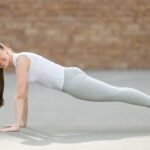Incline Dumbbell Fly: Exercise Overview
The incline dumbbell fly is a targeted isolation exercise designed to develop the pectoralis major, with a particular focus on the upper chest, and secondary engagement of the anterior deltoids. Performed on an incline bench, this movement provides a unique angle to enhance upper chest definition, making it a favorite among bodybuilders pursuing aesthetic goals.
While primarily used for hypertrophy, the incline dumbbell fly can support lifters with strength goals, though its carryover to maximal strength is limited compared to compound presses. It’s an excellent addition to chest-focused workouts, upper-body sessions, or bodybuilding-style splits, offering a controlled way to isolate the pecs for lifters of all levels (Schoenfeld, 2010).
How to Perform the Incline Dumbbell Fly
- Set an incline bench to a 30–45-degree angle and select an appropriate pair of dumbbells.
- Using a neutral grip (palms facing inward), pick up the dumbbells and sit on the bench, resting the weights on your thighs.
- Lie back on the bench, keeping the dumbbells close to your chest, then press them upward to the starting position with arms extended and palms facing each other.
- Slightly retract your shoulder blades, maintain a slight bend in your elbows, and lower the dumbbells outward in a wide arc until they reach chest level, feeling a stretch in your pecs.
- Squeeze your chest to bring the dumbbells back to the starting position in the same arcing motion, avoiding contact between the weights at the top.
- Repeat for the desired number of repetitions, maintaining tension throughout the set.
Tips for Optimal Performance
- Use a Moderate Incline: Set the bench at a 30–45-degree angle to target the upper chest effectively without compromising shoulder safety (Escamilla et al., 2009).
- Focus on Chest Engagement: Visualize hugging a tree to activate the pecs fully, avoiding excessive grip pressure to prevent forearm or bicep dominance (Schoenfeld, 2016).
- Maintain Elbow Angle: Keep a consistent slight bend in your elbows to protect the shoulder joints and ensure proper chest activation (McGill, 2010).
- Control the Movement: Lower and raise the dumbbells slowly to maximize time under tension and avoid momentum or shoulder strain (Wirth et al., 2016).
- Breathe Properly: Inhale as you lower the dumbbells and exhale as you bring them together to support core stability and muscle oxygenation.
- Stabilize Your Core: Engage your abs and keep your feet flat on the floor to prevent excessive lower-back arching, ensuring proper posture throughout the set.
Targeting your upper chest with incline flys? Dive into our Ultimate Guide to Muscle Groups for chest development.







